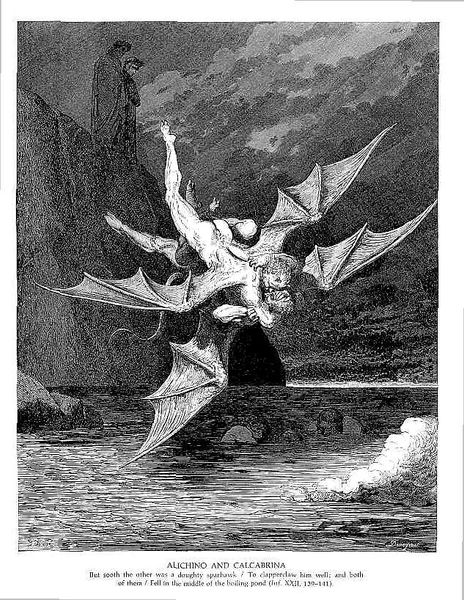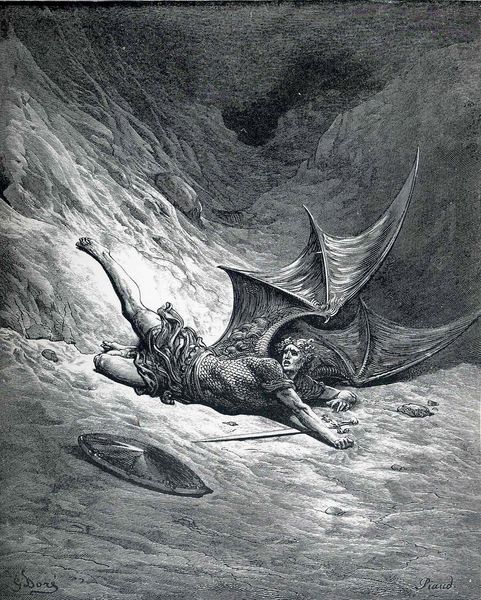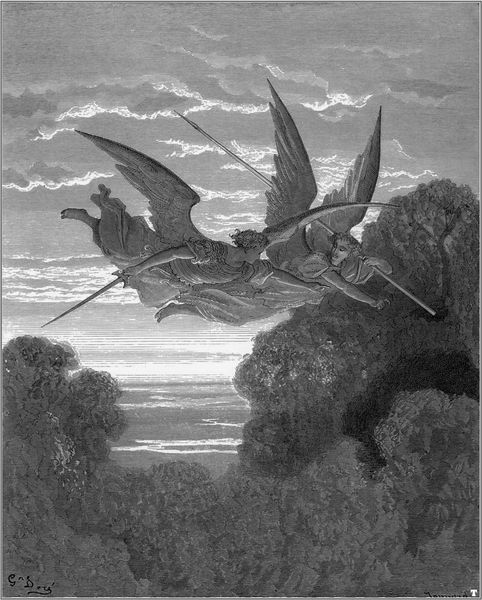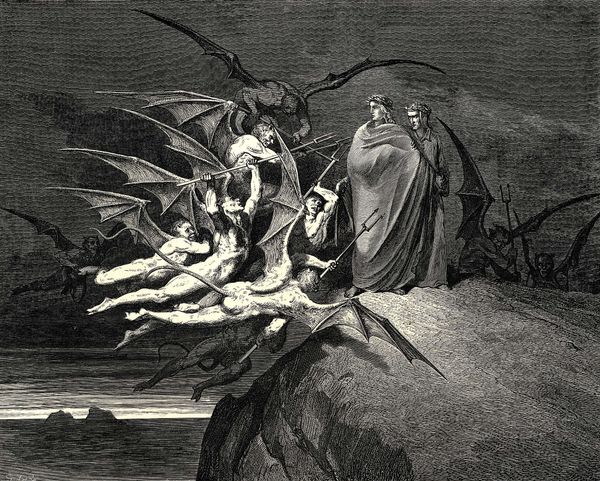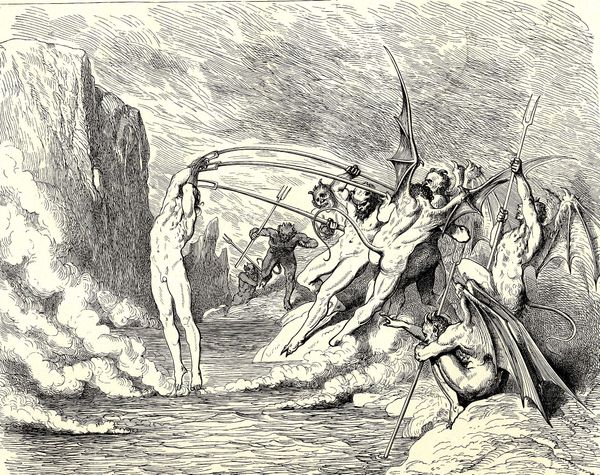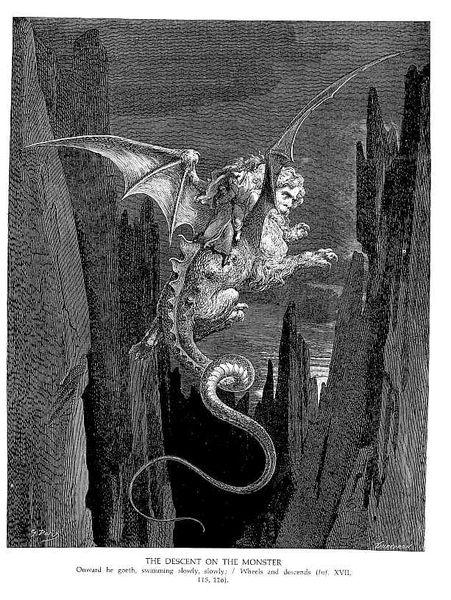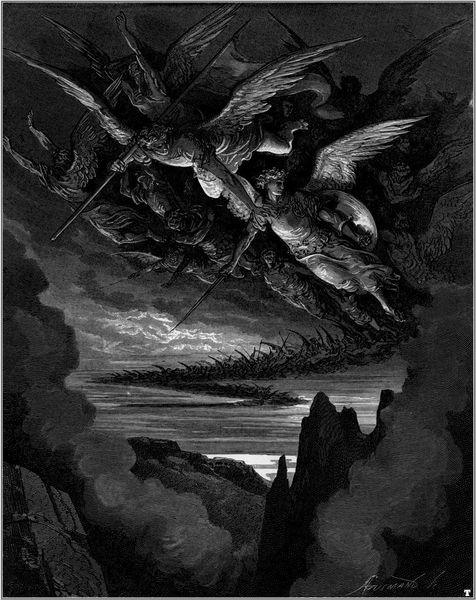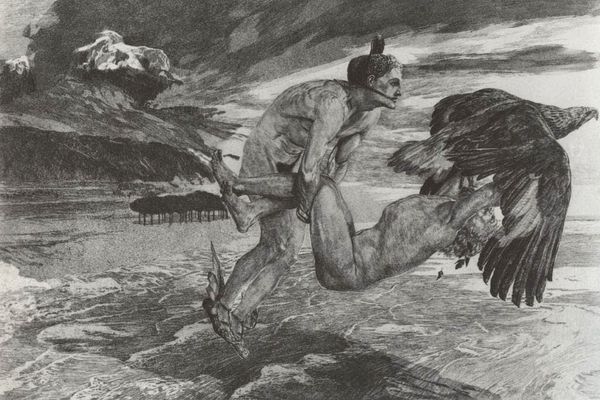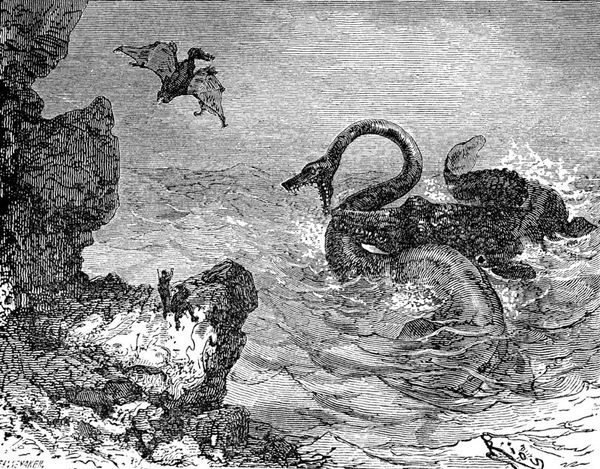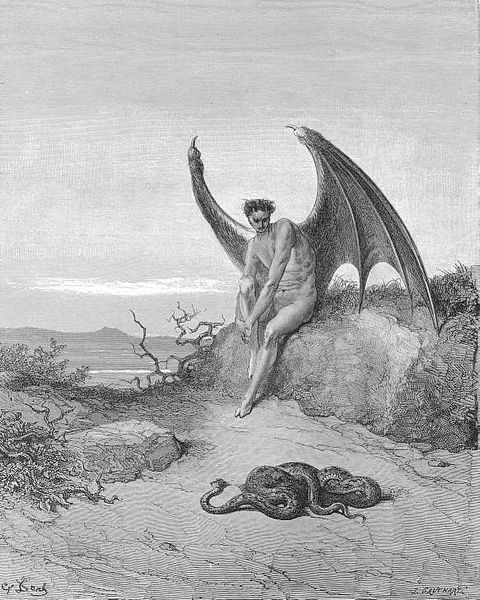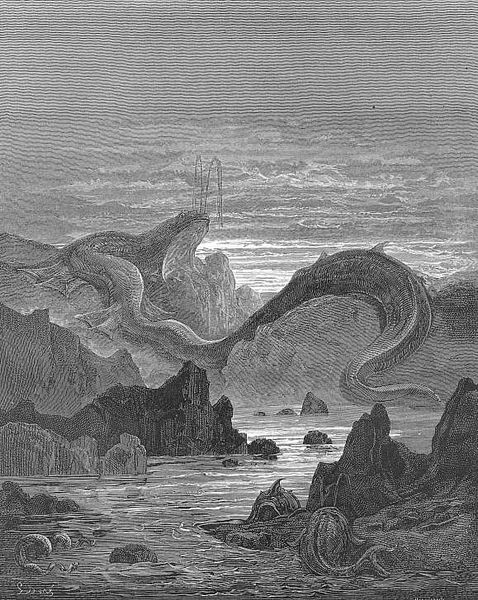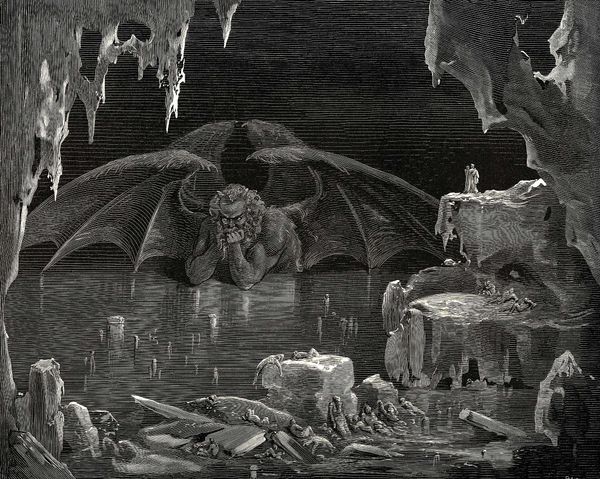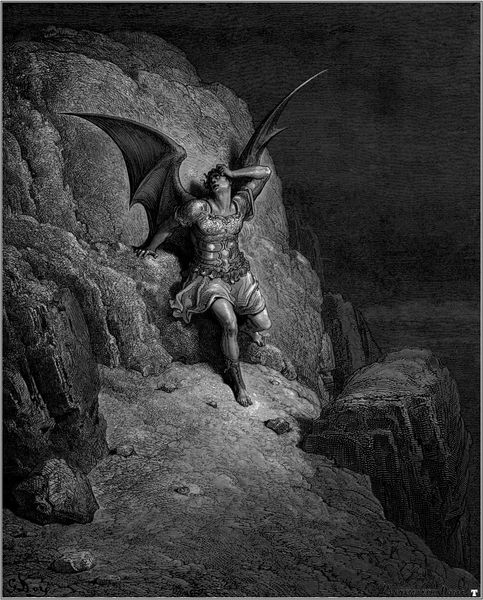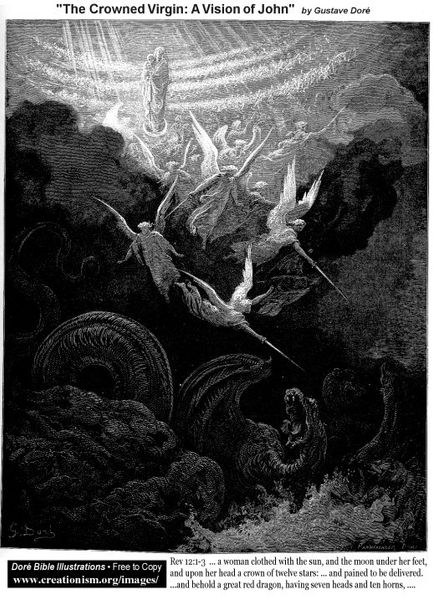
engraving
#
narrative-art
#
sculpture
#
landscape
#
figuration
#
romanticism
#
haunting style
#
surrealism
#
haunting
#
history-painting
#
engraving
#
erotic-art
#
ruin
Copyright: Public domain
Curator: This dramatic engraving, simply titled "The Inferno, Canto 22", is by the prolific artist Gustave Dore. The precise date of its creation seems unrecorded, but it unmistakably illustrates a scene from Dante’s epic poem. It really arrests the eye. Editor: Absolutely, it's a stark and immediate image. The churning water, the monstrous demon, it’s almost overwhelming. The composition throws you right into the thick of Dante's nightmarish vision. A visceral spectacle. Curator: Visceral indeed! Observe the almost cartoonish demon, contrasted with the contorted form of the man he carries; it speaks to the psychological torment experienced in Dante's hell, almost as a symbolic, distorted reflection of inner demons rather than external ones. The fall suggests spiritual destitution. Editor: Right, and the scale here contributes to the emotional impact. The tiny figures of Dante and Virgil in the upper left corner… they’re detached observers, highlighting humanity’s vulnerability when confronted by systemic corruption and evil. Isn’t it telling how those in power are safe while the governed are thrown to hell? Curator: An incisive observation. The figures' safe position allows the artist to reinforce Dante’s condemnation of political corruption through imagery. The demon carries off what appears to be a generic human figure that suggests universality; such artistic choices turn Dante’s experience into a visual moral lesson about humanity's weaknesses, made accessible to 19th-century viewers. Editor: Yes! The fact that Dore chose to depict this particular canto likely says a lot about the societal issues that resonated during his own time. I am quite interested in what kind of imagery he selects in order to convey some implicit criticism! Curator: It makes me think of how potent symbolic imagery can be in reminding society of moral values and providing context. The narrative, carried through visual signs, makes its point effectively through the emotional register. Editor: It truly makes you question not just your individual morality, but the structural inequalities embedded in human systems. Curator: Dore definitely prompts that inquiry. This illustration continues to resonate through cultural memory, an artifact speaking volumes about moral panic, artistic intentions and public sentiment then and today. Editor: Indeed. It certainly gave me a lot to chew on. A potent illustration.
Comments
No comments
Be the first to comment and join the conversation on the ultimate creative platform.
